Table of Contents
- Largest Liquidations
- Bybit Hack – The Biggest Crypto Heist
- Solana Loses Its Leading Position
- The Hunger Games on BNB Chain
- L2s: The Battle for Dominance
- Ethereum’s Hidden Potential
- Conclusion
Table of Contents
- Largest Liquidations
- Bybit Hack – The Biggest Crypto Heist
- Solana Loses Its Leading Position
- The Hunger Games on BNB Chain
- L2s: The Battle for Dominance
- Ethereum’s Hidden Potential
- Conclusion
Crypto Market Recap: February 2025


Key Takeaways:
- Trump’s trade policies triggered significant market turmoil, resulting in historic crypto liquidations exceeding $2B, and potentially up to $10B.
- Bybit experienced the largest crypto hack in history, losing $1.5B to North Korean hackers.
- Memecoins endorsed by political figures, such as LIBRA and CAR, proved fundamentally different and riskier than fair-launched memecoins.
- BNB Chain gained brief attention after CZ (ex-CEO of Binance) sparked a memecoin frenzy by tweeting about his dog, Broccoli, prompting traders to rapidly launch new tokens.
Largest Liquidations
While Trump, back in office for his second term, dominated the market in January, February brought a harsh reality check. His macroeconomic policies, particularly tariffs on Mexico, China, and Canada, sent markets tumbling lower and lower. The total crypto market cap dropped from $3.35T to $2.77T.
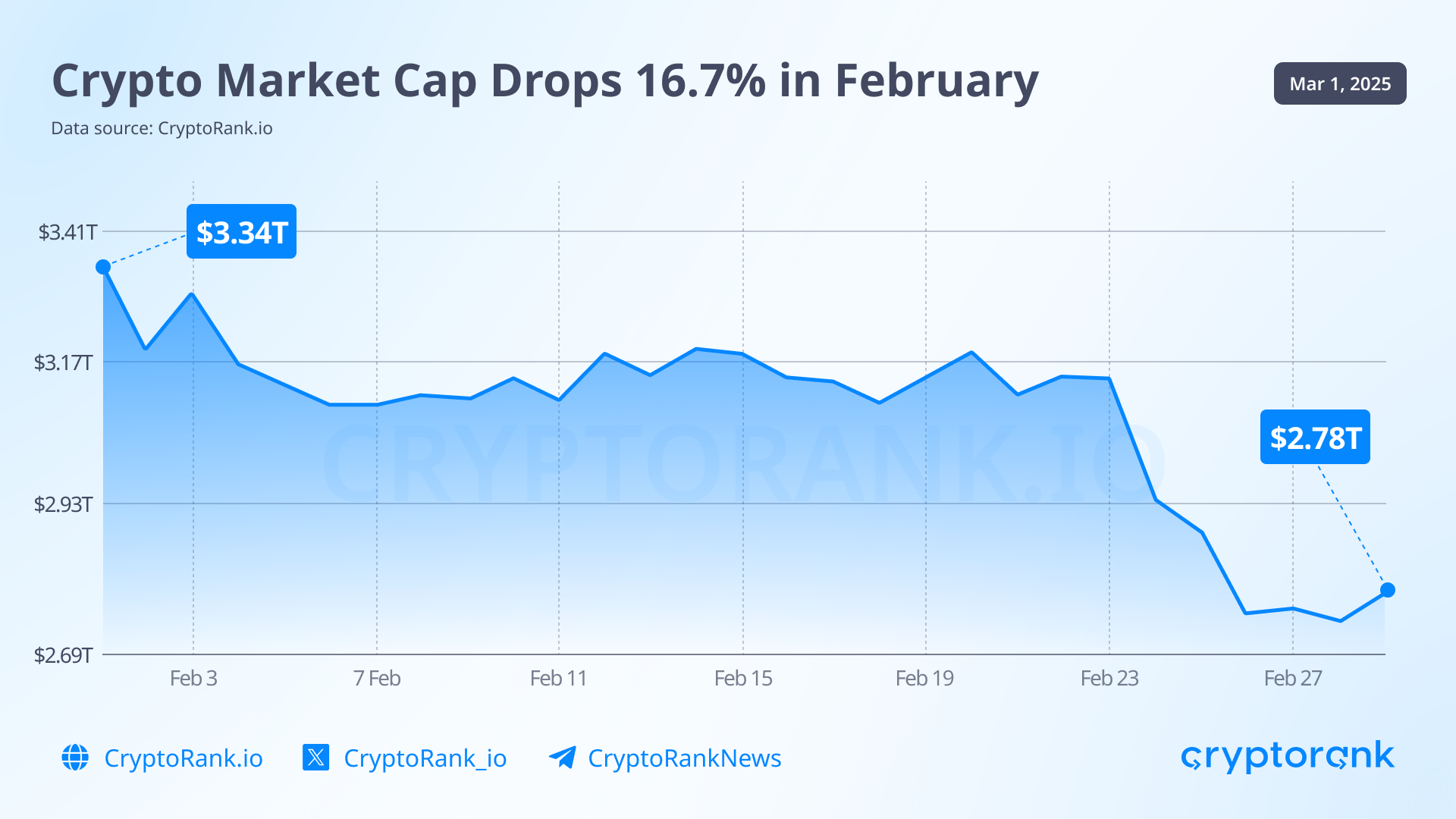
For Bitcoin, February was the worst month since 2022. Despite El Salvador adding 40 BTC to its holdings, Strategy accumulated an additional 27,989 BTC, and Japanese firm Metaplanet increasing its balance to 3,050 BTC, the market couldn’t hold up.
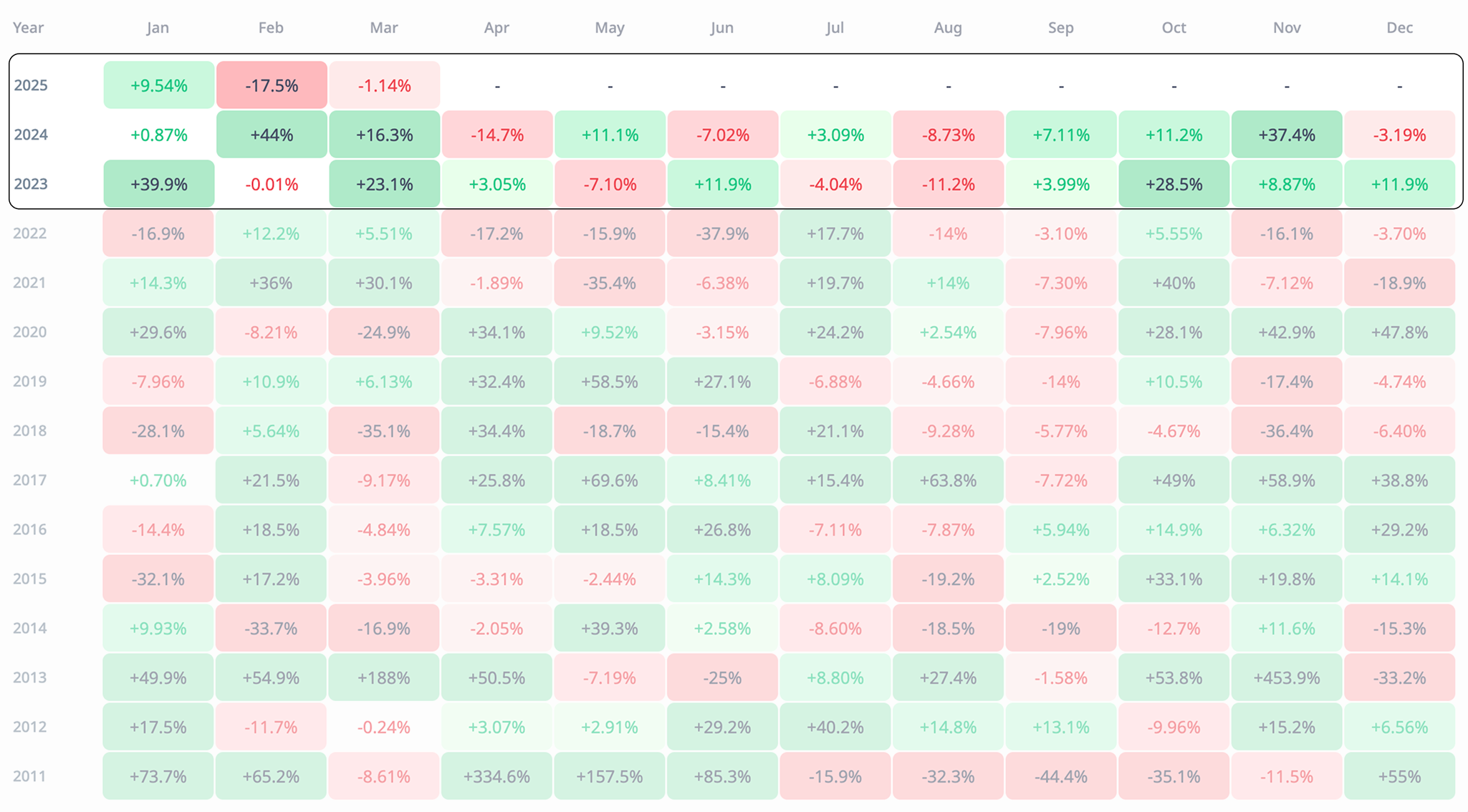
Tensions escalated on February 3rd when a trade war, seemingly triggered by Trump, resulted in 25% tariffs on Canada and Mexico. This led to record-breaking liquidations exceeding $2B, surpassing even those seen during the COVID crash and the FTX collapse. Bybit’s CEO noted on X that the real liquidation numbers could be even higher—potentially $8B-$10B—due to API limitations on how much liquidation data can be pushed per second.
Bybit Hack – The Biggest Crypto Heist
On February 21st, the crypto market witnessed another record-breaking event—Crypto Exchange Bybit lost $1.5 Billion to North Korean Hackers. This attack became the largest heist in the industry’s history.
According to Bybit’s audit of the hack, the attackers had already compromised Safe’s system. A source familiar with the matter stated that the hackers had gained access to a Safe developer’s computer, allowing them to inject malicious code and manipulate transactions.
Analysts quickly linked the attack to the Lazarus Group, a notorious hacking syndicate backed by the North Korean government. Soon after, the hackers dispersed the stolen funds across a vast network of crypto wallets, utilizing the same money-laundering techniques they had employed in previous high-profile heists.
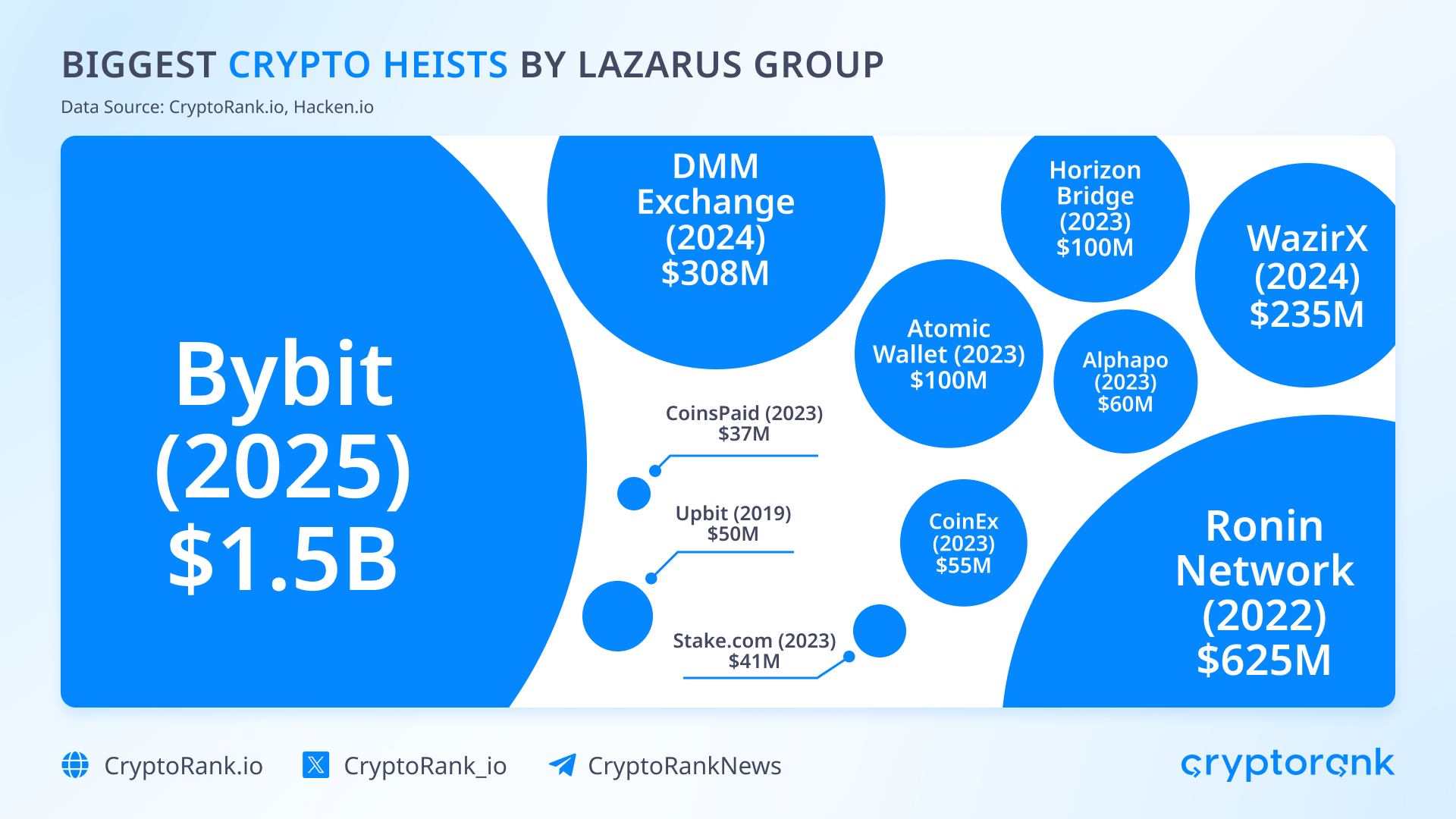
Just hours after the incident, Bybit CEO Mr. Zhou appeared on a livestream on X, assuring customers that Bybit remained solvent. Soon after, other crypto firms stepped in to support the exchange. Gracy Chen, CEO of Bitget, lent Bybit 40,000 ETH (roughly $100M)—with zero interest and no collateral required.
Despite the chaos, Bybit managed to process all withdrawals within 12 hours Mr. Zhou confirmed. Meanwhile, Safe’s team reported that an external forensic review found no vulnerabilities in Safe’s smart contracts, frontend, or services. By February 24th, Bybit successfully restored a 1:1 reserve ratio for client assets. However, the exchange’s reserves took a major hit, dropping by more than $3B.
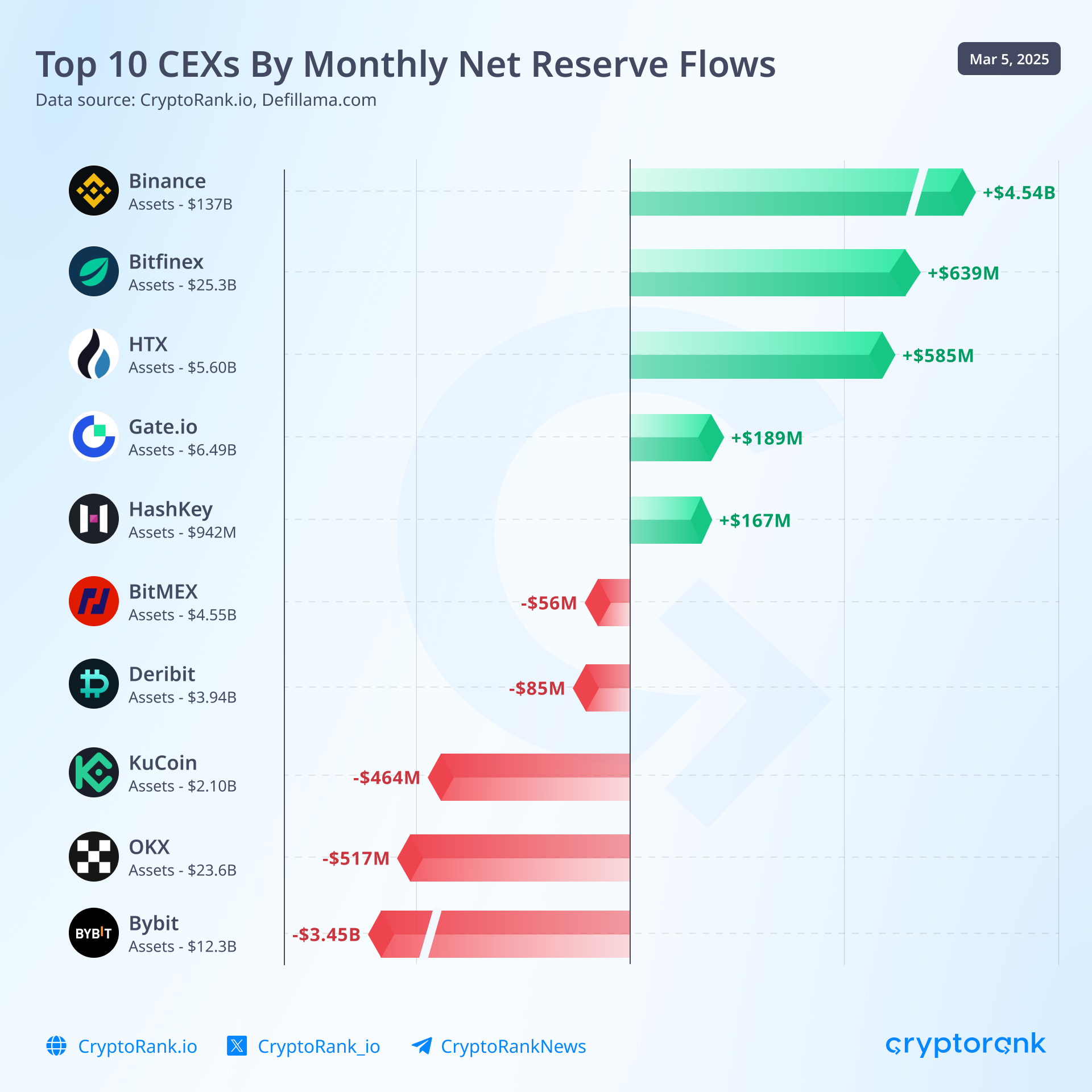
Surprisingly, Bitcoin dropped only 4% following the news, indicating that market participants remained calm and avoided panic-selling—a stark contrast to the FTX collapse. The community praised Bybit’s CEO for his resilience and transparency, as he remained active and composed throughout the crisis. This event served as a testament to the crypto industry’s growing ability to unite and withstand serious challenges.
Solana Loses Its Leading Position
In February, Solana became the center of political influence—whether intentionally or not, politicians effectively killed the memecoins trend. The TRUMP and MELANIA tokens, which were launched in late January, lost over 80% of their value.
On February 10th and 17th, two more tokens, LIBRA and CAR, were launched—with the involvement of the President of Argentina and the Central African Republic. However, after both coins crashed within days, causing heavy losses for traders, the market quickly recognized that ‘memecoins’ launched by politicians and celebrities—where they control and vest the majority of the supply—are fundamentally different from the fair-launch memecoins that initiated this cycle.
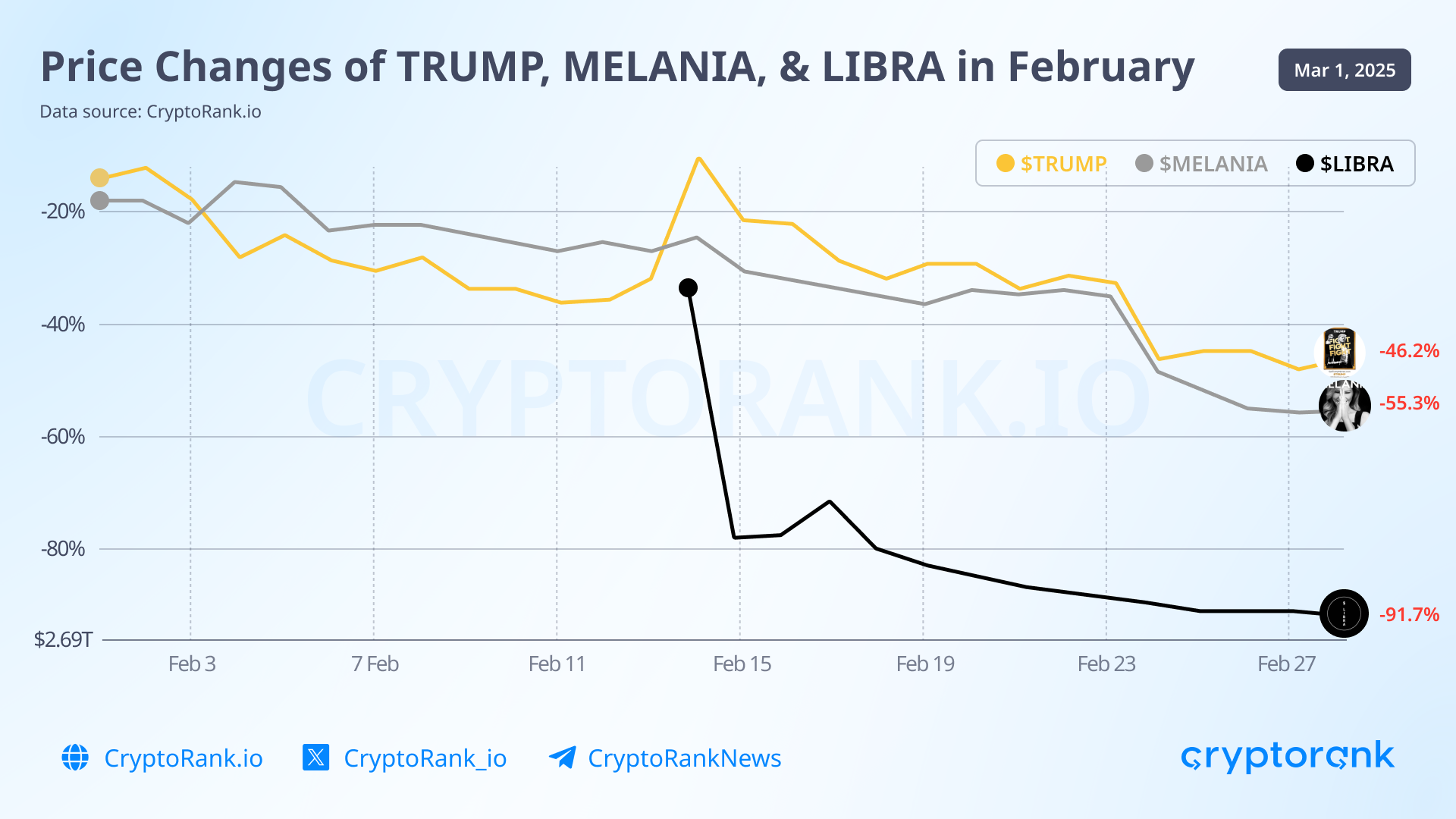
The sharp drop in memecoin trading and launches didn’t just impact major dApps generating record revenues like Pump.fun and Raydium—it also reflected in Solana’s on-chain activity. Many key metrics fell back to early 2024 levels.
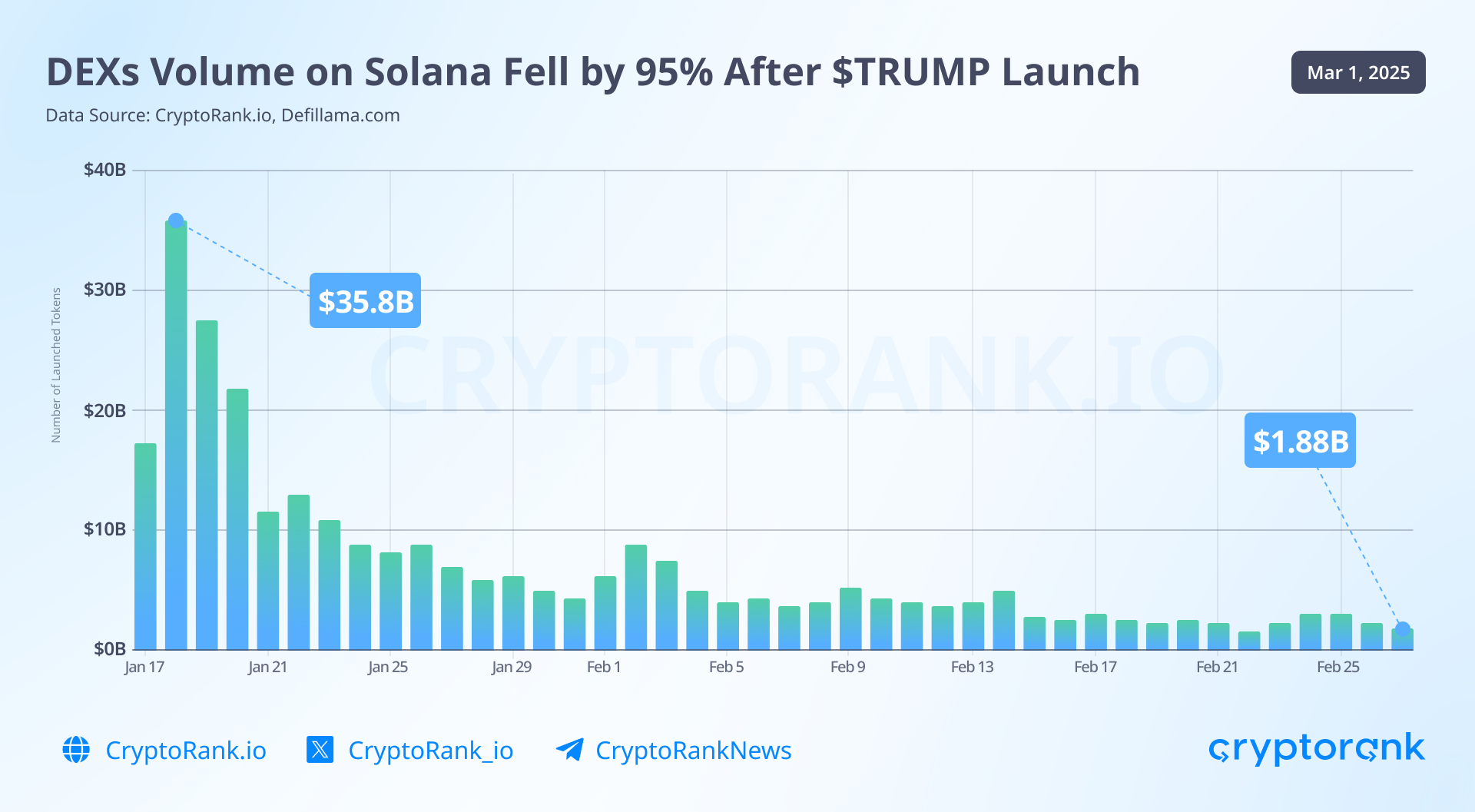
In an attempt to reignite activity, Pump.fun launched its mobile app in February and announced the development of its own AMM. However, the news had an unexpected impact—RAY dropped 30% on the day of the announcement. Nevertheless, overall trading volumes and token launches on Pump.fun declined significantly.
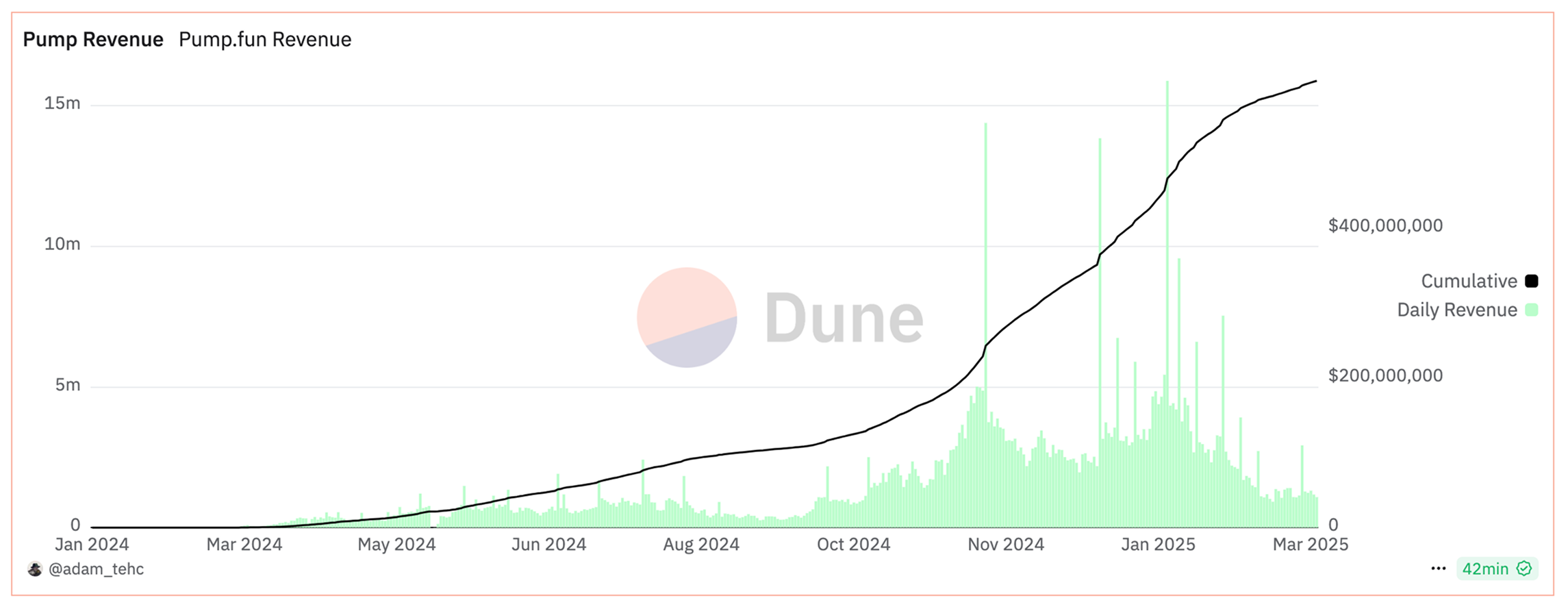
The abrupt collapse of this market narrative further pressured SOL’s price, leading to a 40% decline in February. The decline was further accelerated by large unlocks of tokens from the FTX estate, originating from transactions with the Solana Foundation back in 2020.
The Hunger Games on BNB Chain
As Solana started losing its dominance due to the memecoin collapse, a fierce competition for attention began across the market. Any network that could successfully capture users would also attract liquidity. However, instead of one clear winner, the activity spread evenly across BNB Chain, Base, Avalanche, and Sonic.
BNB Chain managed to steal the spotlight, largely thanks to CZ (ex-CEO of Binance), who sparked a frenzy on X by questioning how the market decides which memecoin will pump. Later, he teased a picture of his dog, encouraging market participants to compete by creating their own coins, essentially turning it into a “battle royale” for the top memecoin.
Following CZ’s post about his dog, Broccoli, the “Hunger Games” began. Some traders raced to launch the first memecoin, while others tried to buy the very first one, assuming it would naturally become the leader. The impact of this frenzy was evident in PancakeSwap’s revenue, which spiked sharply on February 13-14, indicating that a significant number of memecoin traders from Solana had moved to BNB Chain.
Most of these new coins launched on Four.meme, a platform that had just recently gone live—and had already survived an attempted hack.
The CZ-fueled activity caused a major spike in network fees, pushing gas prices up to 25 gwei on February 14th—7x higher than the yearly average.
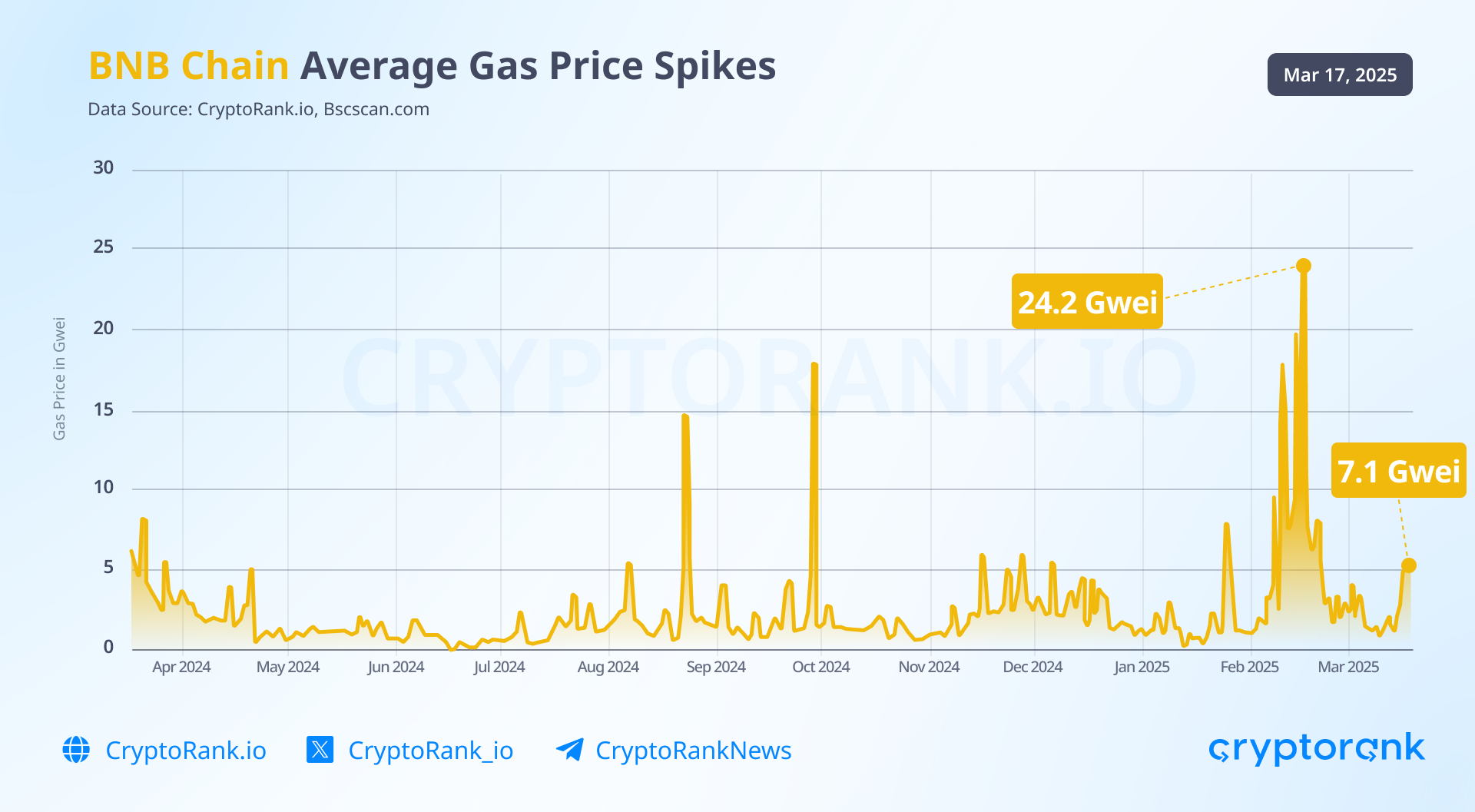
Despite the hype, Four.meme’s activity remained significantly lower than that of Pump.fun on Solana. On February 13th, Pump.fun saw 50.3K new tokens launched, while Four.meme only recorded 8.7K.
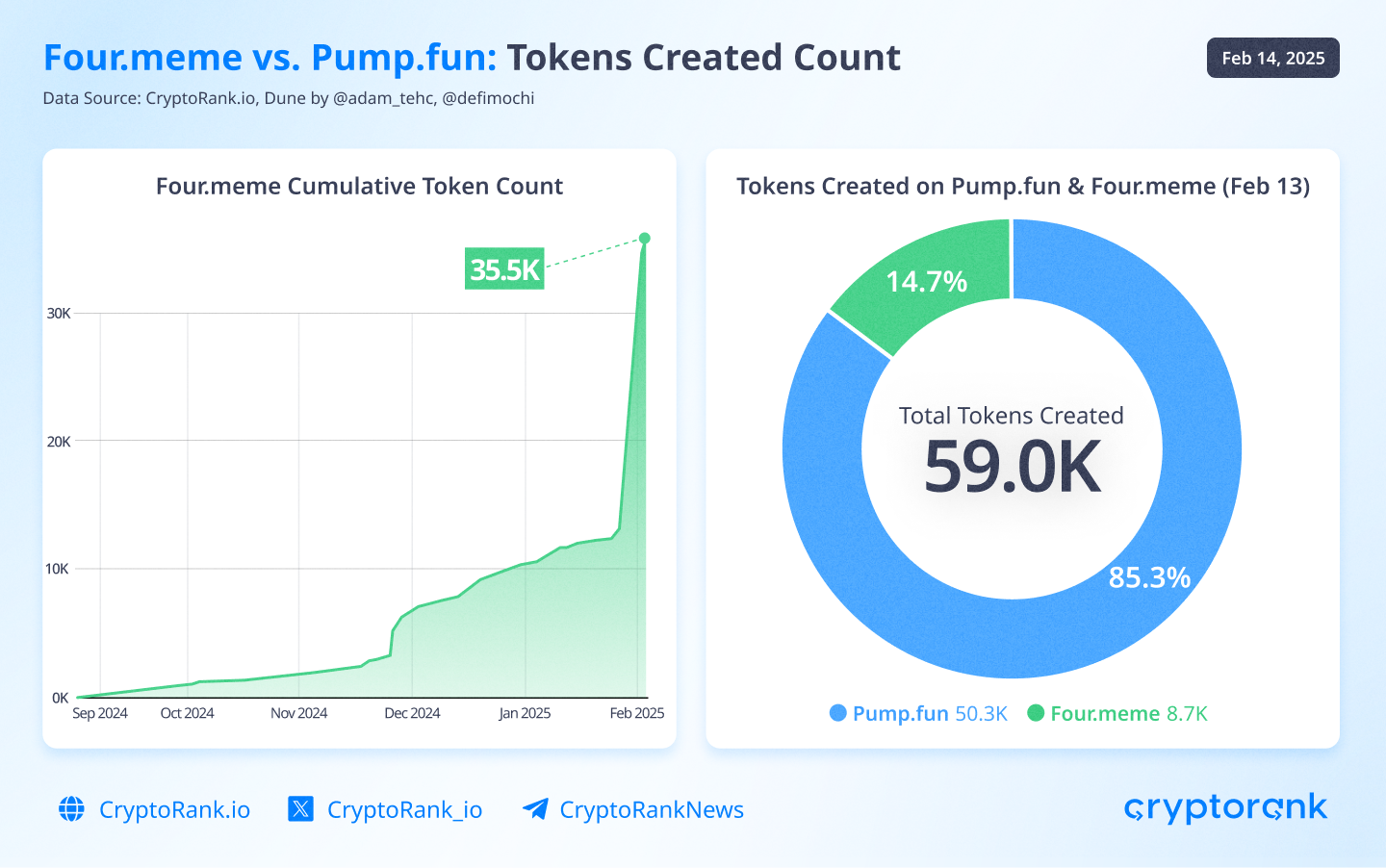
Ultimately, the hype, orchestrated by one of crypto’s most influential figures, faded away. The main reason? No single memecoin emerged as the clear leader, causing attention to scatter across multiple projects, leaving the market uninterested.
L2s: The Battle for Dominance
Among L2 blockchains, Base has long held its position as the second most active network after Solana, and that didn’t change in February. While Base also saw a decline in activity, it still managed to capture users’ attention, surpassing all other L2s in terms of active addresses.
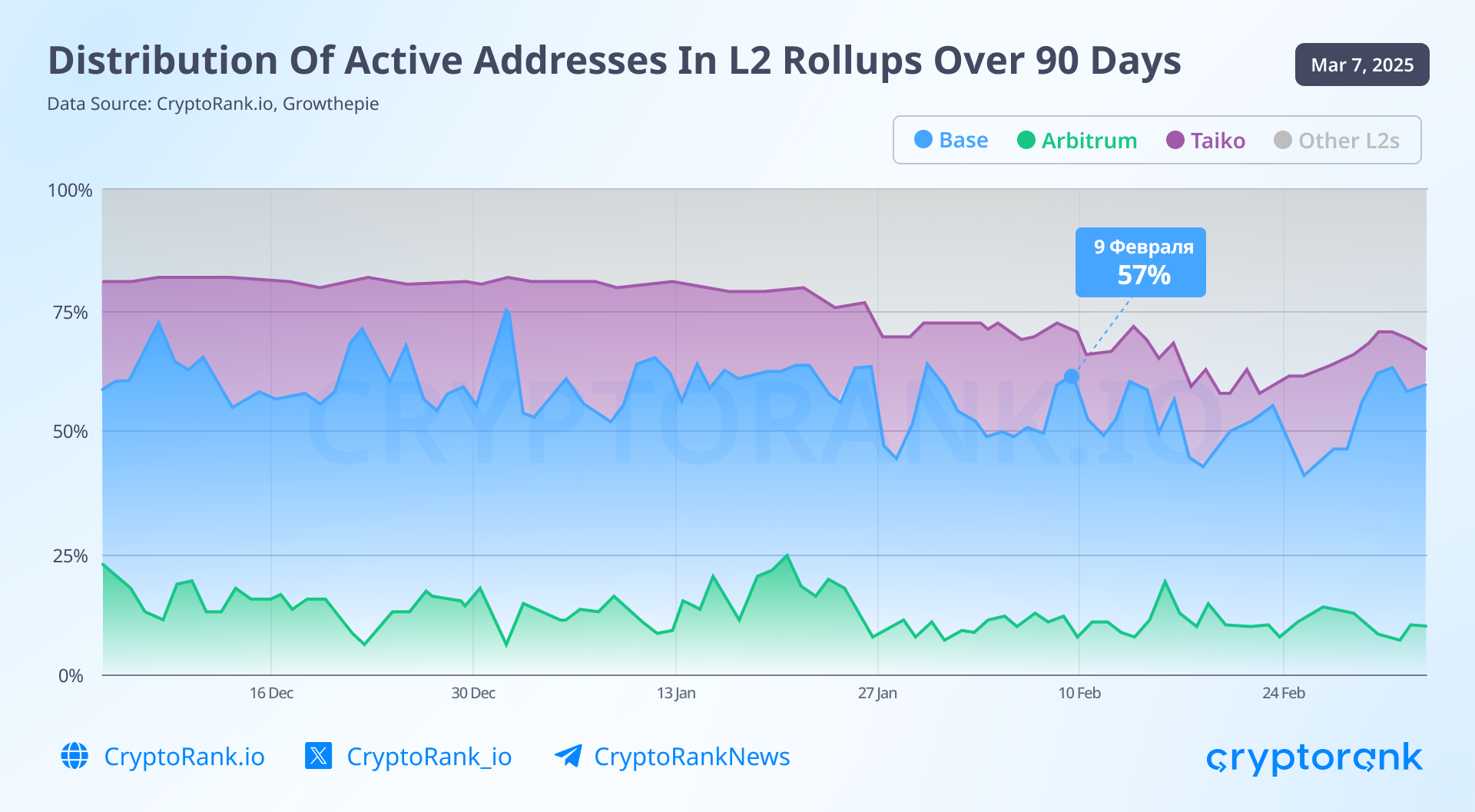
In February, Base announced a major upgrade in the Sepolia testnet, which will increase block production speed to 0.2s—twice as fast as Solana. This was made possible by implementing Flashblocks, a technology where partial blocks are issued by block builders and streamed to nodes every 200 milliseconds (5x per second). This enables near-instant transaction pre-confirmations with native revert protection.
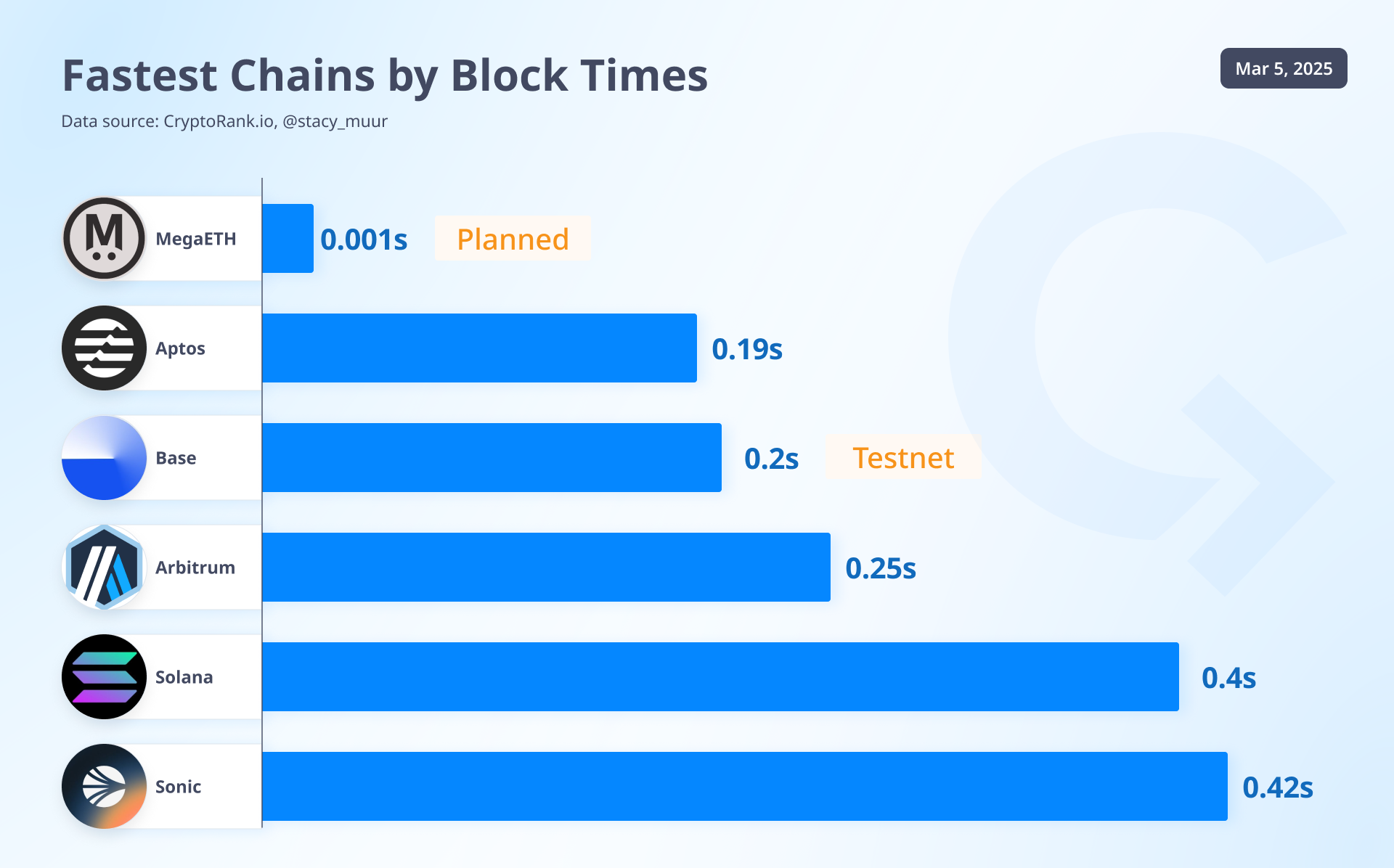
Another boost to Base’s activity came from the TGE and airdrop of Kaito, one of the most anticipated projects. Interestingly, Kaito chose Base instead of Solana, which had recently hosted Pudgy Penguins, Trump tokens, and many AI agent projects. Additionally, Zora announced a snapshot and an upcoming token launch on Base (despite having its own chain) and introduced an update where every post on the platform becomes a tradable token.
As the memecoin hype began fading, attention naturally shifted to Sonic (formerly Fantom Network). Andre Cronje, co-founder of Sonic, revived market faith in DeFi and blockchain tech by introducing FlyingTulip, a project that will integrate multiple products tied to an adaptive AMM, dynamically adjusting liquidity curves based on real-time volatility for each trading pair.
While the project is still under development, Sonic’s TVL tripled in February, reaching $1.2B. The network’s main DEX, Shadow Exchange, saw a sharp rise in TVL, offering attractive yields in liquidity pools.
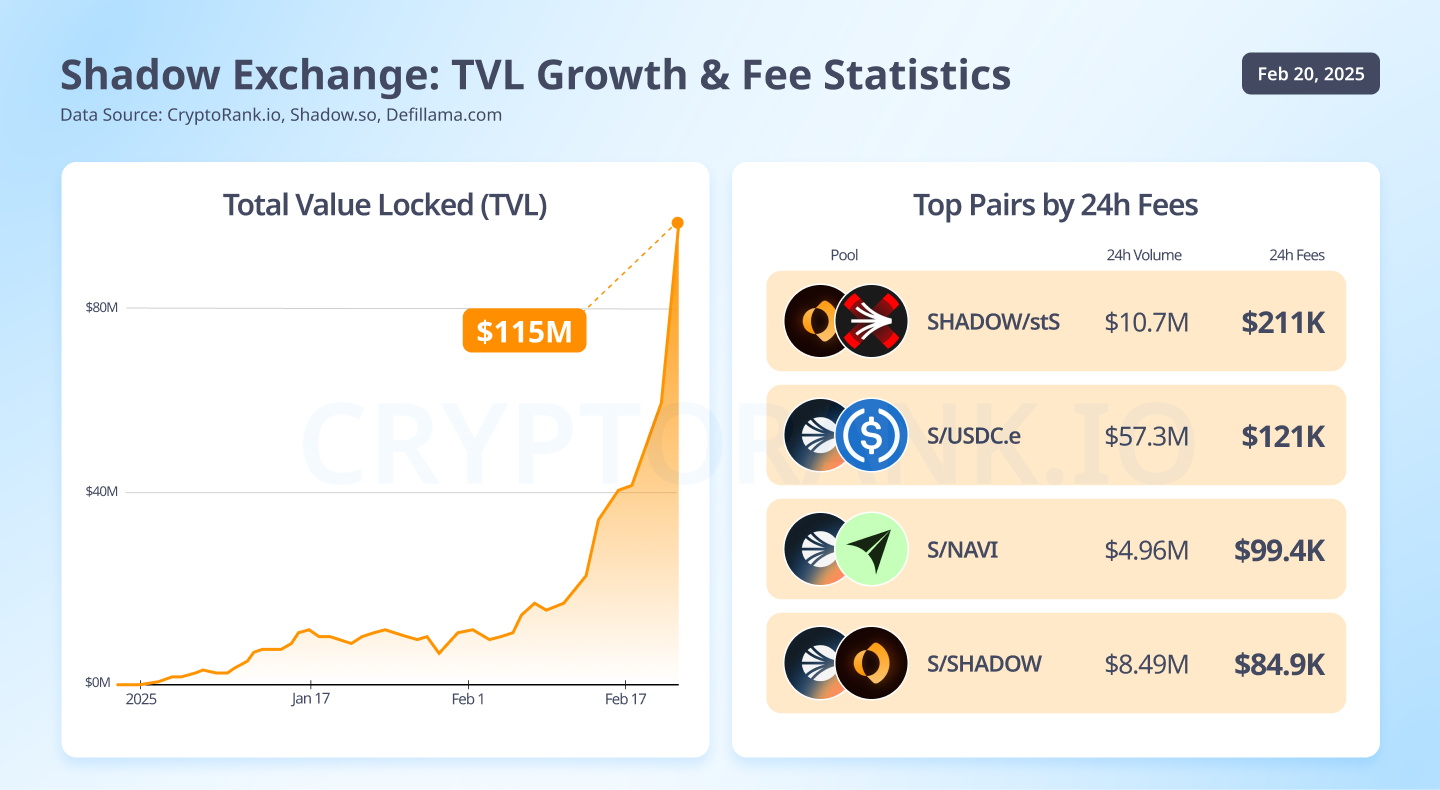
Although the initial hype around Sonic faded quickly, largely due to broader market conditions, the network continues to expand its TVL and ecosystem. One key factor driving adoption is that 90% of transaction fees are returned to the dApps where they were generated, incentivizing builders.
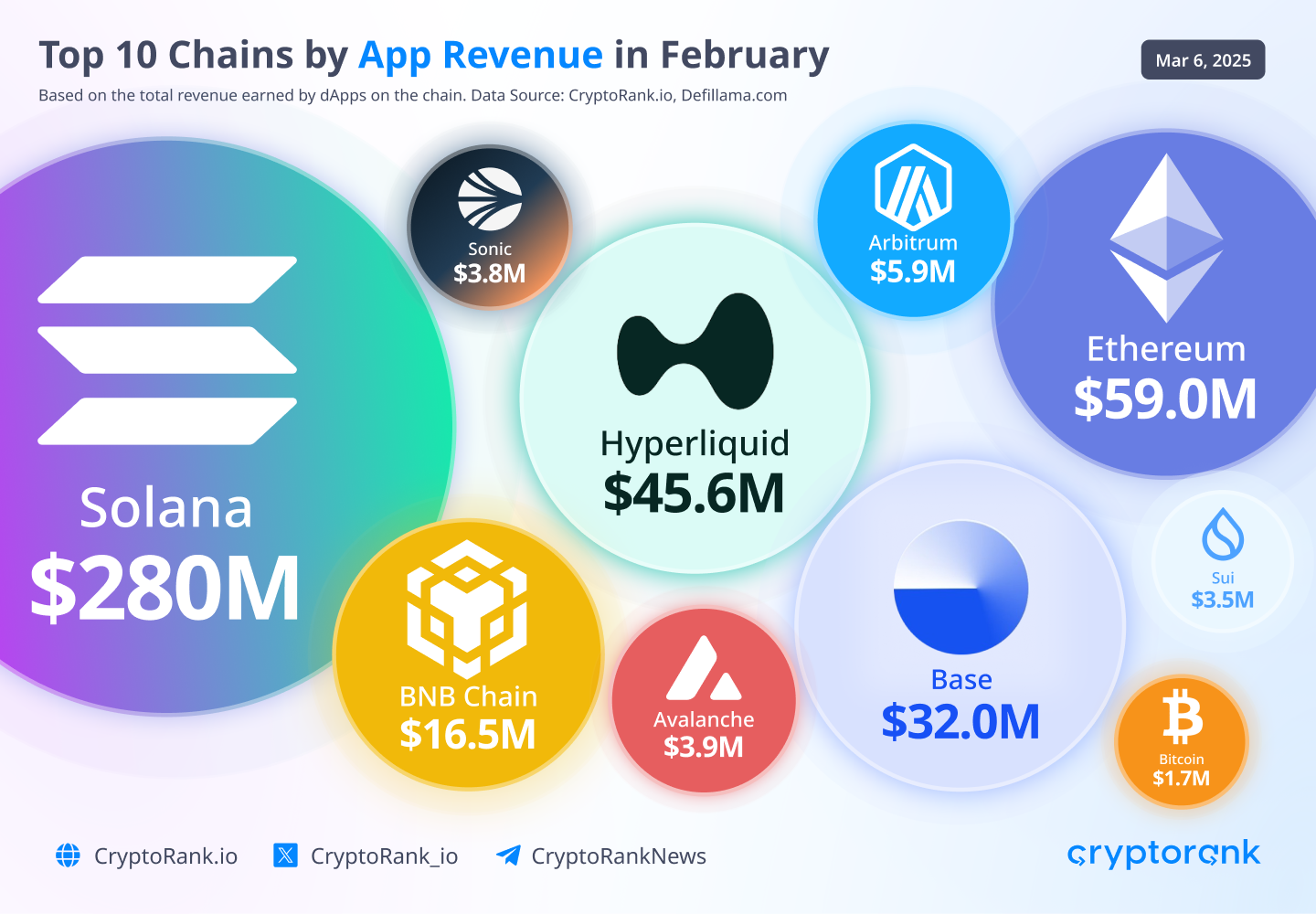
Additional factors attracting users to Sonic include native USDC support, integration with AAVE, and 720ms block finalization. The Sonic Summit, set to take place from May 6-8 in Vienna, is expected to bring major announcements that could shape the network’s future.

Ethereum’s Hidden Potential
As the market declines, ETH’s price follows suit, leading some investors to compare Ethereum to a stablecoin, as its price has returned to 2022 levels. This price action, combined with the lack of major market-moving news—such as the anticipated ETH ETF staking launch—has left investors disappointed. This sentiment is reflected in the increasing number of headlines declaring that "Ethereum Has Died."
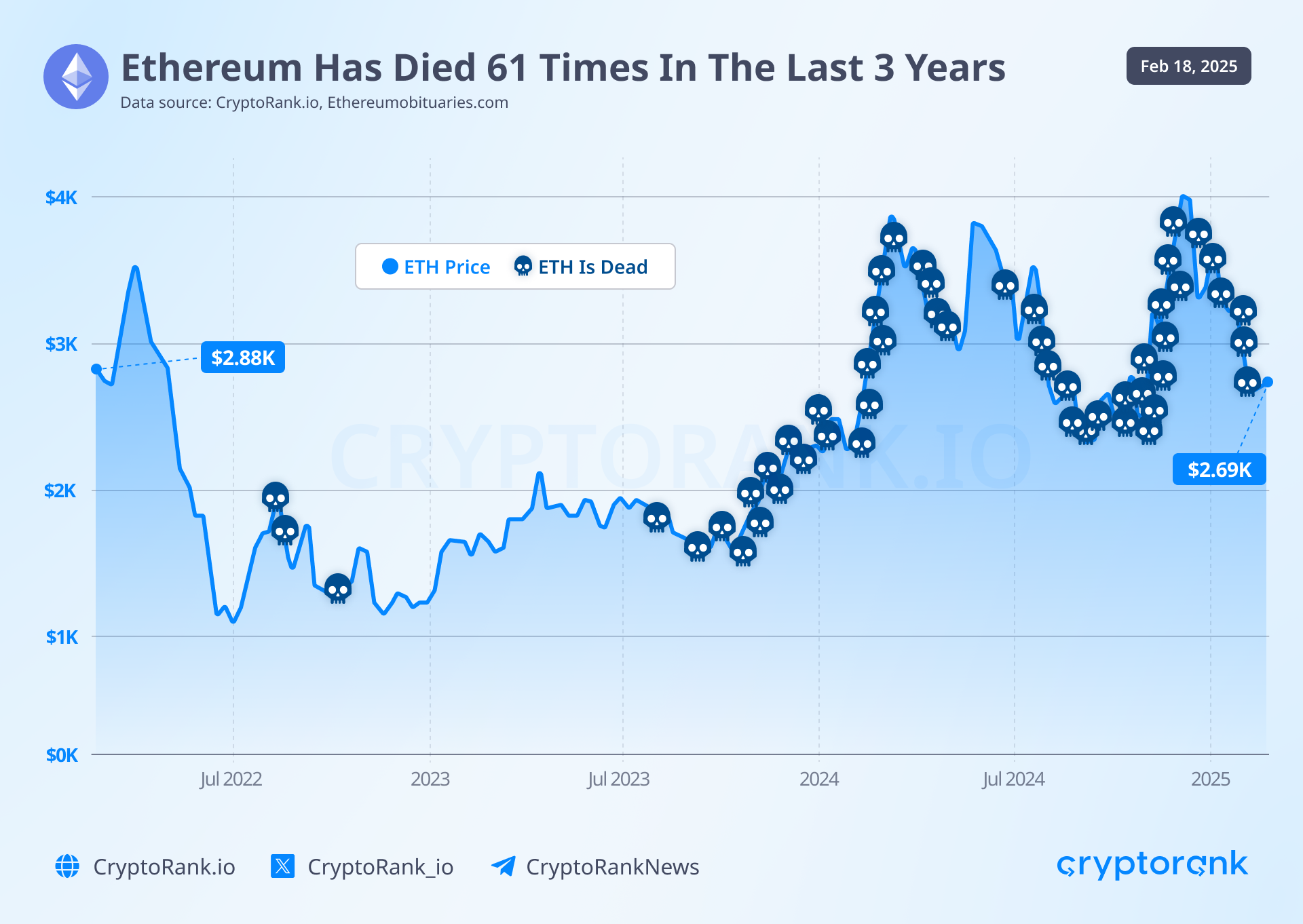
Even metrics such as ETH Supply on Exchanges reaching historic lows can be interpreted in two ways. While it suggests decreasing sell pressure, it may also indicate a drop in trader and investor activity on exchanges.
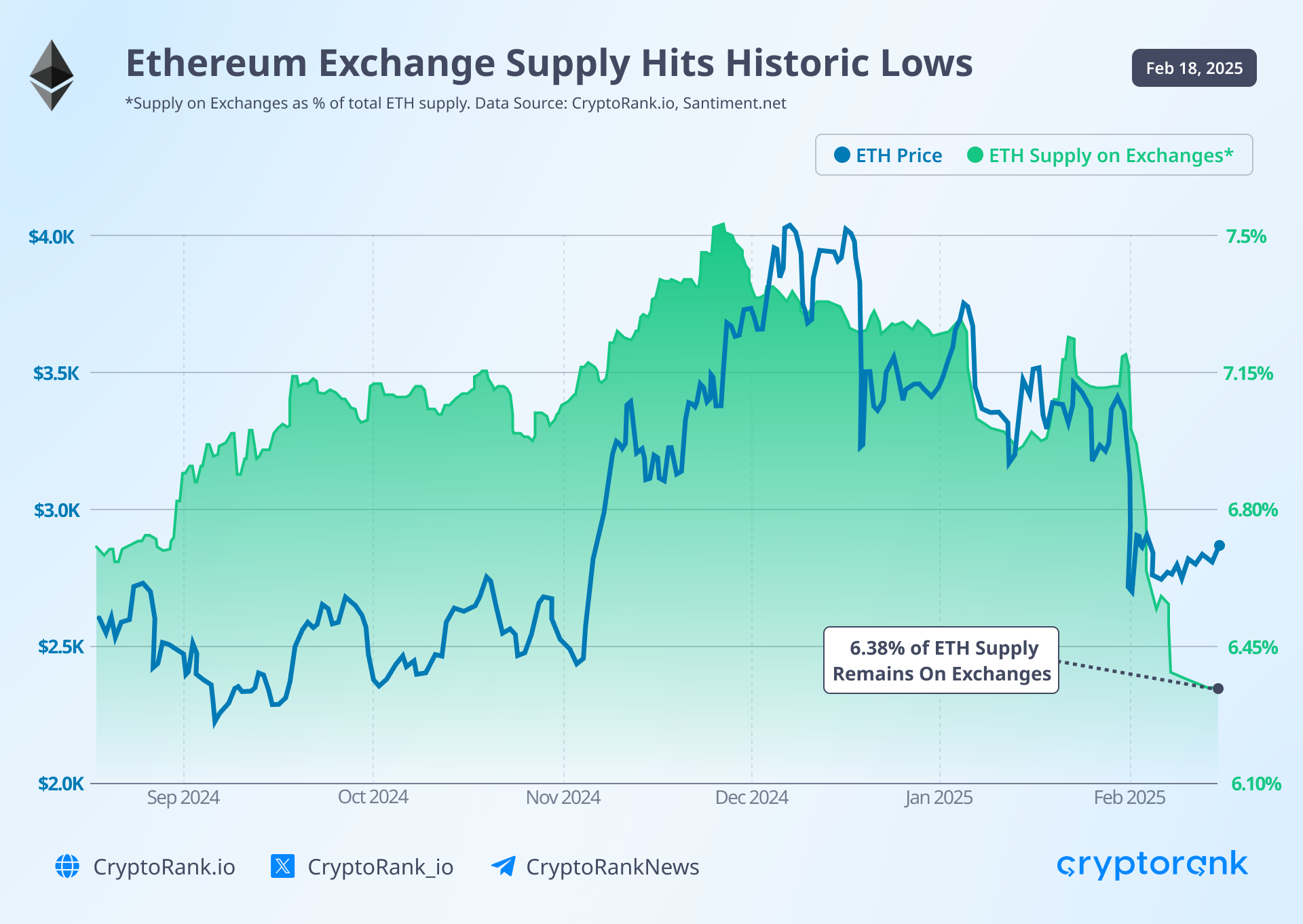
However, February saw several important developments that could positively impact the EVM ecosystem in the long run. Let’s take a quick look at them:
-
On February 19, the Ethereum Foundation, in collaboration with Hyperlane and Bootnode, launched the Open Intents Framework—a tool for testing and implementing intents in Ethereum-based protocols. This innovation addresses L2 network fragmentation by simplifying cross-chain interactions. Vitalik has highlighted this issue in his articles about Ethereum’s future, which we covered in detail in our previous article.
-
The Ethereum Foundation transferred 50K ETH to a DeFi multisig wallet and deposited it into AAVE, Compound, and Spark. This move not only signals EF’s intent to make better use of its ETH reserves but also shows institutional support for established DeFi protocols, rather than solely focusing on emerging startups.
-
The Petra upgrade was successfully launched on the Sepolia testnet, albeit after an initial failed attempt. The Pectra upgrade, scheduled for March 2025, will increase the validator stake limit from 32 to 2,048 $ETH and enhance wallet functionality.
-
Ethereum Denver took place, producing an immense amount of content over its eight-day duration. Attendees experienced unique performances and engaging activities from projects—like receiving deodorant from the Arbitrum team. We highly recommend checking out the lectures from the conference, available on the ETHDenver YouTube channel.
Additionally, Ethereum increased its gas limit for the first time since the Proof-of-Stake migration, leading to a significant drop in transaction fees, which have now hit historic lows.
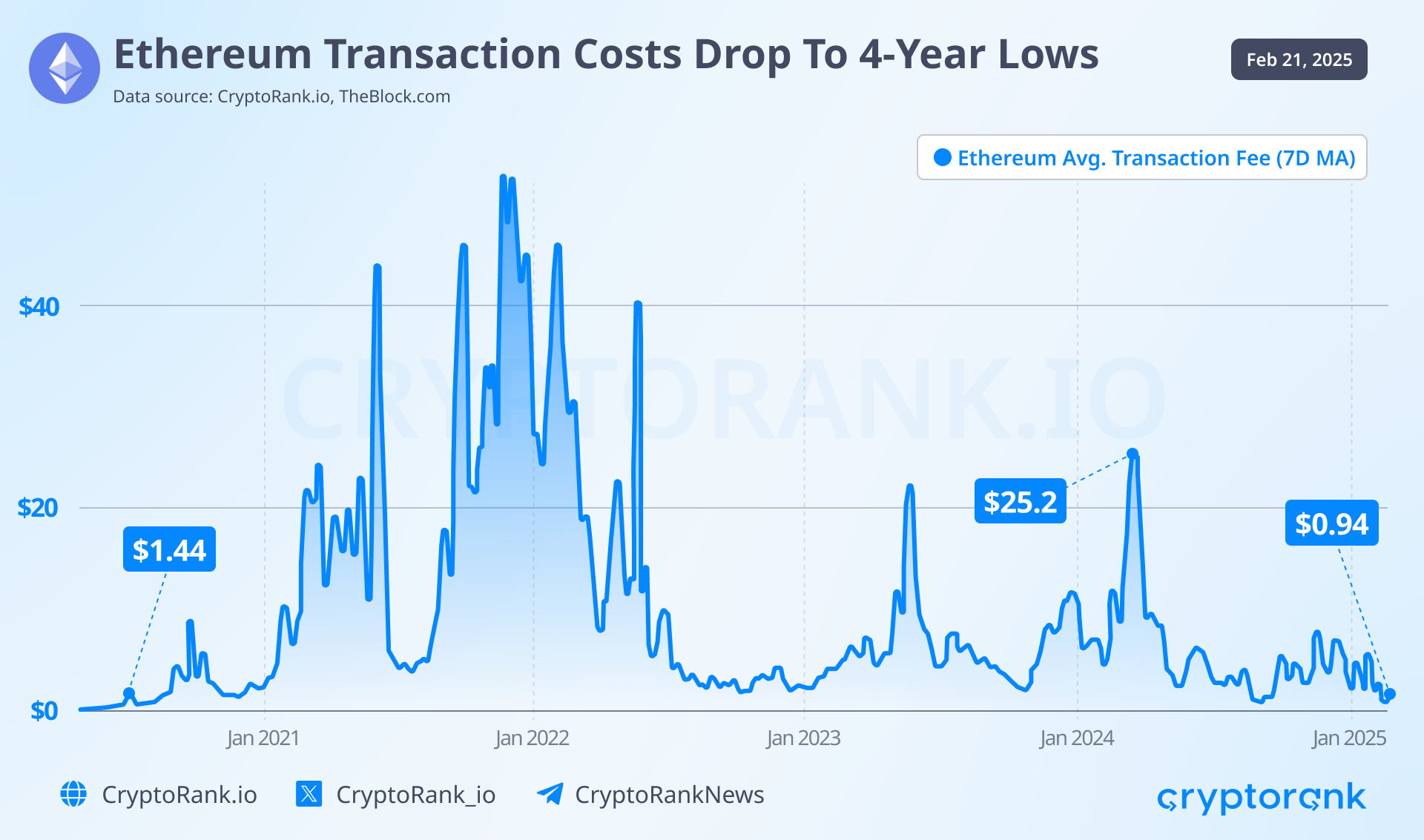
Another major development in the Ethereum ecosystem was the launch of Unichain by Uniswap and the transition to Uniswap v4, introducing the Hooks mechanism, which allows developers to customize liquidity pools at a deeper level. For more details, check out our article “Uniswap v4 Hooks: How to Use Them to Profit.”
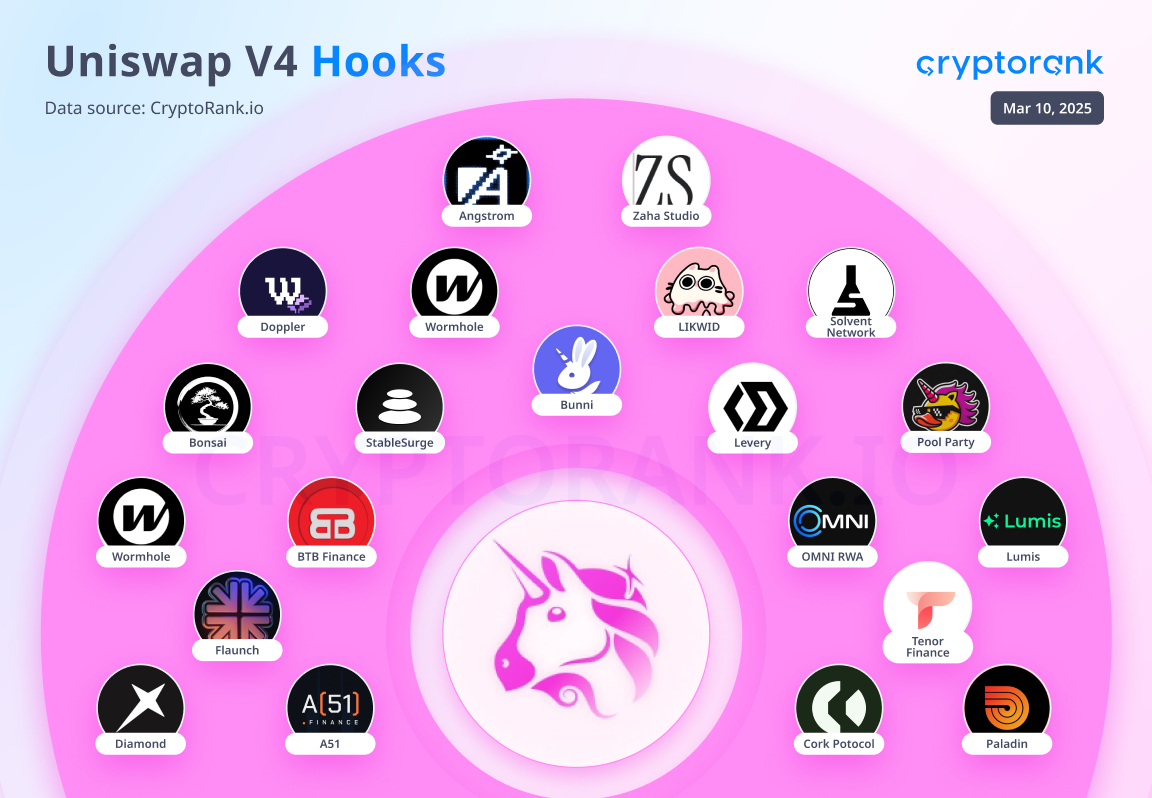
Conclusion
Despite the predominance of red candles throughout February, labeling it a bear phase would be inaccurate, as numerous noteworthy events unfolded daily. Tokens like IP, IP, BERA, and KAITO entered the market, showing strong momentum. FTX payouts began, and alongside the ongoing DEFAI trend, a new trend—DEPAI—emerged.
February reminds us of an important piece of wisdom: The darkest hour is before the dawn.
Disclaimer: This post was independently created by the author(s) for general informational purposes and does not necessarily reflect the views of ChainRank Analytics OÜ. The author(s) may hold cryptocurrencies mentioned in this report. This post is not investment advice. Conduct your own research and consult an independent financial, tax, or legal advisor before making any investment decisions. The information here does not constitute an offer or solicitation to buy or sell any financial instrument or participate in any trading strategy. Past performance is no guarantee of future results. Without the prior written consent of CryptoRank, no part of this report may be copied, photocopied, reproduced or redistributed in any form or by any means.
In This Insight
Coins
Read More

Crypto Market Recap: January 2025
Table of Contents
- Largest Liquidations
- Bybit Hack – The Biggest Crypto Heist
- Solana Loses Its Leading Position
- The Hunger Games on BNB Chain
- L2s: The Battle for Dominance
- Ethereum’s Hidden Potential
- Conclusion
Table of Contents
- Largest Liquidations
- Bybit Hack – The Biggest Crypto Heist
- Solana Loses Its Leading Position
- The Hunger Games on BNB Chain
- L2s: The Battle for Dominance
- Ethereum’s Hidden Potential
- Conclusion




